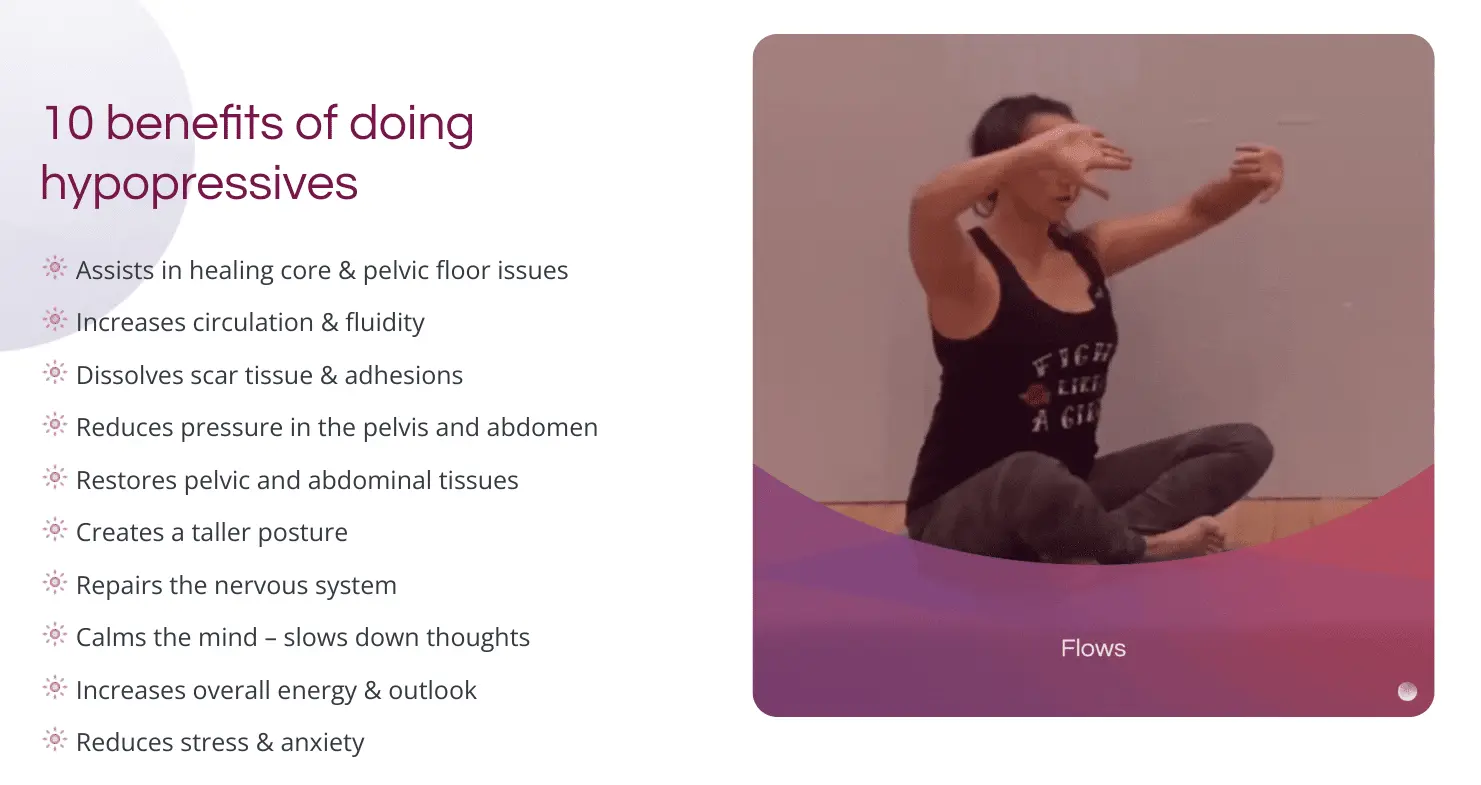Rectal Prolapse vs Hemorrhoids: How To Tell The Difference
- June 9, 2022
- Pelvic Floor

Rectal Prolapse vs Hemorrhoids:
Overview
Struggling with pain down there, and don’t know what’s causing it? Maybe it’s rectal prolapse, hemorrhoids, or perhaps something else!
Two of the most common reasons for pain in your buttocks are rectal prolapse and hemorrhoids. But regardless of what’s causing the issue, both can be resolved naturally, without surgery or pills.
In addition, these are both common conditions and nothing to be embarrassed or ashamed of, and no need to suffer in silence either.
If you’re wondering what exactly hemorrhoids and rectal prolapse are, what causes them, how they are diagnosed, and how to treat them naturally, we’ve got answers for you!
Let’s go ahead and get started.
Do You have Rectal Prolapse
or Hemorrhoids?
Perhaps the biggest difference between these two conditions lies in the nature of how they occur: rectal prolapse happens when the last section of your large intestine bulges out of your anus, while hemorrhoids are swollen veins in your anus or lower rectum.
Given that both of these issues affect your anus and rectum, it’s no wonder they manifest similar symptoms such as fecal incontinence, among others.
Once you can point out what you’re really going through, you’re much closer to healing hemorrhoids and rectal prolapse the right way. So, let’s sort them out.
What are hemorrhoids?
Actually, we all have hemorrhoids and anatomically, they aren’t a health issue at all.
In fact, they are also known as hemorrhoidal veins — vascular cushions with 3 main functions:
• helps close the anal canal during high abdominal pressure.
• provides sensory information to set stool, liquid, and gas apart.
• protects a group of muscles at the end of your rectum (a.k.a. anal sphincter).
However, these veins are barely noticeable when they are in good condition. So when they attract (unwanted) attention as they swell or dilate and cause pain, the term hemorrhoids now refers to hemorrhoidal disease or piles. (When we talk about hemorrhoids in this blog, what we mean is the varicose veins that develop in the rectum.)
Hemorrhoids can also be categorized into:
1. Internal Hemorrhoids – are found inside the anal canal. If not addressed, they might grow large and bulge out of the anus which becomes painful when squeezed or cut off from their blood supply.
2. External Hemorrhoids – are found outside or around your anus. When blood pools in external hemorrhoid, this might cause a clot and become a thrombosed hemorrhoid which is very painful due to inflammation.
Rectal prolapse, on the other hand, is a medical condition where your rectum (the last part of your large intestine) slides out from its normal position on the pelvic area through the anal opening.
Rectal prolapse can be classified into 3 types:
1. Partial Prolapse – (also called mucosal prolapse) is when only the rectum’s mucous membrane lining slides out and protrudes from the anus. It may occur while having a bowel movement and is most prevalent in children 2 years old or younger. This can easily be mistaken as hemorrhoids too.
2. Complete Prolapse – is when the entire rectum wall falls out of its normal position and protrudes from the anus. It may begin to manifest during a bowel movement or light movements such as standing or walking, but may progress where the rectum tissue sticks out all the time.
3. Internal Prolapse – is when part of the large intestine’s wall or rectum slides or moves into a different area.
Symptoms of Hemorrhoids vs. Rectal Prolapse
Since hemorrhoids and rectal prolapse are completely 2 different conditions in the same area of the body, both might have similar symptoms.
Recognizing these distinct signs and symptoms is helpful in finding the right remedy for you.
Symptoms of Hemorrhoids
Some of the most common symptoms of hemorrhoids include:
• Bright red blood in your stool
• Leaking feces
• Swelling or developing a hard lump around your anus
• Skin that sticks out of the anus when defecating
• Pain or soreness around the anus when sitting
• Extreme itching, inflammation & irritation around your anal area
More serious symptoms of enlarged hemorrhoids are:
• Mucus discharge
• A sensation that the bowel is not really empty
• Bleeding without pain
Symptoms of Rectal Prolapse
Symptoms that typically appear in cases of rectal prolapse include:
• Constipation
• Anal pain, itching, bleeding
• Bulge in your anus after sneezing, coughing, or lifting
• Mucous discharge in your stool
• Difficulty emptying your bowels
• Bowel incontinence
• Pressure in your rectum
• Abdominal pain or discomfort
What Causes Hemorrhoids and Rectal Prolapse?
Hemorrhoids are usually caused by strain on the veins around your anus while rectal prolapse is generally caused by the weakening of the muscles supporting your rectum.
Based on studies, hemorrhoids are more prevalent (affecting 75% of people in America alone) than rectal prolapse (which happens to only 2.5 people per 100,000 population annually). However, researchers believe that the true incidence rates of these conditions are unknown because of underreporting.
What is consistent is that both of these conditions affect women more than men. Let’s see what other factors trigger hemorrhoids and rectal prolapse.
Causes of Hemorrhoids
The following factors can increase your risk of developing hemorrhoids:
More serious symptoms of enlarged hemorrhoids are:
• Mucus discharge
• A sensation that the bowel is not really empty
• Bleeding without pain
• Pregnancy
• Family history of hemorrhoids
• Anal intercourse
• Standing or sitting (especially on the toilet) for long periods
• Overweight or Obesity
• Doing tasks that strain your rectum (like heavy lifting)
• Recurring constipation or diarrhea
• Aging (more common in 30 years old and older)
• Low-fiber diet
• Stress
Causes of Rectal Prolapse
The exact cause of rectal prolapse is unknown but some factors may increase your risk of developing one:
• Pregnancy and childbirth
• Chronic diarrhea or constipation
• Overusing laxatives
• Straining during bowel movements
• History of stroke
• Neurological problems such as spinal cord issues
• Weakening of pelvic floor muscles
• Previous injury to the anal, lower back, or pelvis
• Nerve damage
• Lumbar disk disease
• Parasitic infection, such as schistosomiasis (very rare)
• Conditions that increases pressure within the abdomen such as chronic obstructive pulmonary disease (COPD)
How To Properly Diagnose Whether You have Hemorrhoids or Rectal Prolapse?
You may be tempted to self-diagnose if what you have is hemorrhoids or rectal prolapse based on your symptoms. But the truth is, both conditions can actually start out asymptomatic (having no symptoms).
So by the time you see an obvious sign like blood in your stool, it’s still a better idea to seek a professional diagnosis.
Diagnosis for hemorrhoids
Doctors usually diagnose hemorrhoids through a Digital Rectal Examination (DRE) where they use a lubricated glove to insert a finger inside your rectum and check for possible issues.
They may also conduct additional tests like anoscopy, proctoscopy, sigmoidoscopy, and colonoscopy which all involve using a small camera to have a clear view in your anus, rectum, or colon.
Diagnosis for rectal prolapse
Your doctor will likely run through your medical history then conduct a physical examination to get a clue if what you really have is a rectal prolapse. He or she might also conduct some imaging tests to identify other possible pelvic floor dysfunctions and find the best possible treatment.
These tests might be any of these: video ecogram, anorectal manometry, barium enema, anal electromyography (EMG), anal ultrasound, pudendal nerve terminal motor latency test, defecography, proctosigmoidoscopy, colonoscopy, and magnetic resonance imaging (MRI).
How Do You Treat Hemorrhoids & Rectal Prolapse Naturally? – No Surgery

At MoonRise, we strongly believe in science-based, natural healing. Creams and surgeries might relieve some symptoms but without healing the root cause of these issues, it may keep on coming back — putting your finances and quality of life in jeopardy.
Take Rebecka for example. Six months after her prolapse surgery, she struggled to walk and continued to endure pain.
She said before signing up for Filippa’s Pelvic Floor Dysfunction Program, “my life quality was affected, I felt hopeless and experienced a lot of sadness.” But after the 3 month program Rebecka’s quality of life turned around in a significant way.
Listen to her full video testimonial here to find out how she healed.
Treatments for Hemorrhoids
In more severe cases of hemorrhoids, some doctors may recommend surgery for “fast relief”, but in reality, surgery may just be a band-aid solution that does not guarantee the same results for each patient. This is why we recommend healing naturally, from within, as much as possible.
Here are some of the home remedies we recommend that have shown promising results to hundreds of women in our community:
• Adding fiber-rich food to your diet
• Drinking more water
• Wearing well-fitting underwear and loose clothing
• Taking warm baths
• Essential Oils
• Taking stool softeners
• Placing cold compress on the affected area to reduce inflammation
You may also prevent flare-ups by:
• Not delaying or forcing your bowel movement
• Sitting right but not for long periods
• Keeping your anal area clean
• Avoiding scented products to wash the affected area
• Replacing dry toilet paper with a damp one
Treatments for Rectal Prolapse
Treatments for rectal prolapse usually focus on preventing constipation and straining. But two of the most famous interventions for prolapse are Kegels and pessaries, neither of which we recommend. Because aside from showing little to no results, they can actually make your prolapse worse!
We’ve seen it before, and I’ve personally tried them and they failed me.
So with my experience along with the expertise of many devoted practitioners, we developed the Pelvic Floor Dysfunction program to give women natural, safe, and effective ways to reverse prolapse and other pelvic floor issues.
It’s a revolutionary system complete with science-based natural healing methods that have been effective for our students.
Here are some of the natural techniques and methods we recommend to reverse rectal prolapse:
• Vaginal Steaming – an ancient technique using herbs and steam to heal prolapse
• Hypopressives – breathing and postural exercises to improve pelvic floor health
• Pelvic floor relaxation – relaxes tensed or overactive pelvic floor muscles
• Belly Dancing – hip movements to strengthen your pelvic floor
• Healthy, Clean Eating – consuming a healthier diet to help your body heal faster
• Essential Oils – finding the right essence to connect with yourself
• Meditation – reduces stress and helps you regain emotional and mental clarity
• Visualization and Affirmation – believing in your body’s ability to heal
Get Rid of Hemorrhoids and
Rectal Prolapse Naturally!
During the Pelvic Floor Dysfunction Program, you’ll learn exercises and methods to help restore & rehabilitate your pelvic floor health. With a pelvic floor that has fluidity, flexibility, and less scarring, many symptoms of rectal prolapse and hemorrhoids go away.
Here are some of the benefits of joining this program:
- 1-to-1 support from me
- A personalized schedule of daily exercises
- Regular group calls hosted by me with your fellow MoonRisers
- A private Facebook group where you can ask questions and get support from other women taking the journey to heal from Pelvic Dysfunction
Become your own success story
Every part of your body is interconnected, so regardless of whether it’s hemorrhoids or rectal prolapse, the best way to counter it is through holistic healing. Believe me, a strong yet flexible pelvic floor will help you be a better, stronger, and healthier you!
Blog posts you might like:






